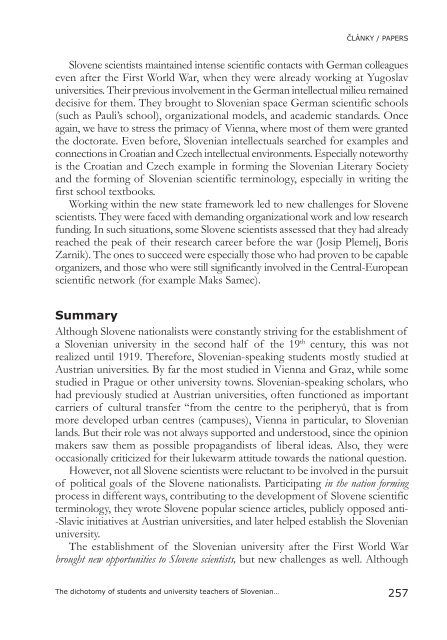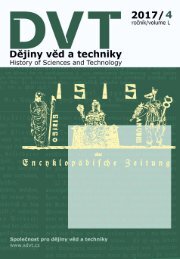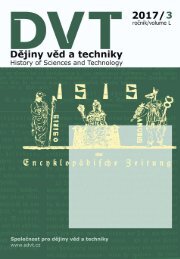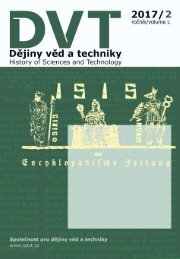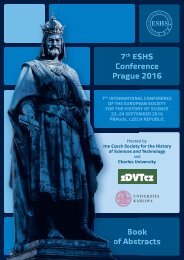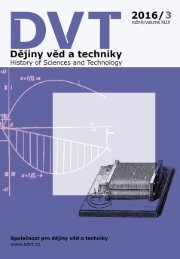Dějiny věd a techniky 2015, 4
Číslo je věnováno 7. mezinárodní konferenci Evropské společnosti pro dějiny vědy, která se konala 22.–24. září 2016 v Praze.
Číslo je věnováno 7. mezinárodní konferenci Evropské společnosti pro dějiny vědy, která se konala 22.–24. září 2016 v Praze.
You also want an ePaper? Increase the reach of your titles
YUMPU automatically turns print PDFs into web optimized ePapers that Google loves.
ČLÁNKY / PAPERS<br />
Slovene scientists maintained intense scientific contacts with German colleagues<br />
even after the First World War, when they were already working at Yugoslav<br />
universities. Their previous involvement in the German intellectual milieu remained<br />
decisive for them. They brought to Slovenian space German scientific schools<br />
(such as Pauli’s school), organizational models, and academic standards. Once<br />
again, we have to stress the primacy of Vienna, where most of them were granted<br />
the doctorate. Even before, Slovenian intellectuals searched for examples and<br />
connections in Croatian and Czech intellectual environments. Especially noteworthy<br />
is the Croatian and Czech example in forming the Slovenian Literary Society<br />
and the forming of Slovenian scientific terminology, especially in writing the<br />
first school textbooks.<br />
Working within the new state framework led to new challenges for Slovene<br />
scientists. They were faced with demanding organizational work and low research<br />
funding. In such situations, some Slovene scientists assessed that they had already<br />
reached the peak of their research career before the war (Josip Plemelj, Boris<br />
Zarnik). The ones to succeed were especially those who had proven to be capable<br />
organizers, and those who were still significantly involved in the Central-European<br />
scientific network (for example Maks Samec).<br />
Summary<br />
Although Slovene nationalists were constantly striving for the establishment of<br />
a Slovenian university in the second half of the 19 th century, this was not<br />
realized until 1919. Therefore, Slovenian-speaking students mostly studied at<br />
Austrian universities. By far the most studied in Vienna and Graz, while some<br />
studied in Prague or other university towns. Slovenian-speaking scholars, who<br />
had previously studied at Austrian universities, often functioned as important<br />
carriers of cultural transfer “from the centre to the peripheryů, that is from<br />
more developed urban centres (campuses), Vienna in particular, to Slovenian<br />
lands. But their role was not always supported and understood, since the opinion<br />
makers saw them as possible propagandists of liberal ideas. Also, they were<br />
occasionally criticized for their lukewarm attitude towards the national question.<br />
However, not all Slovene scientists were reluctant to be involved in the pursuit<br />
of political goals of the Slovene nationalists. Participating in the nation forming<br />
process in different ways, contributing to the development of Slovene scientific<br />
terminology, they wrote Slovene popular science articles, publicly opposed anti-<br />
-Slavic initiatives at Austrian universities, and later helped establish the Slovenian<br />
university.<br />
The establishment of the Slovenian university after the First World War<br />
brought new opportunities to Slovene scientists, but new challenges as well. Although<br />
The dichotomy of students and university teachers of Slovenian…<br />
257


